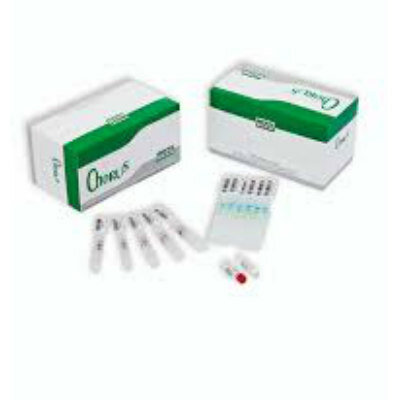Leelamine Blocks Melanoma Growth by Disrupting Cellular Cholesterol Transport
By LabMedica International staff writers
Posted on 04 Jun 2014
An experimental chemotherapeutic drug interferes with intracellular cholesterol transport, which kills melanoma cells by disrupting several molecular pathways simultaneously.Posted on 04 Jun 2014
The drug, leelamine, which is a natural compound isolated from pine bark, is a diterpene compound and a weak agonist of the cannabinoid CB1 receptor. The structure of leelamine contains no binding oxygen atoms, underscoring its weak association with the CB1 binding site. Leelamine has been reported to inhibit PDK (pyruvate dehydrogenase kinase) activity.
The PI3 kinase (PI3K), MAP kinase (MAPK), and STAT3 molecular pathways promote disease development by being constitutively activated in 50%–70% of melanomas. To identify a drug capable of simultaneously targeting the PI3K, MAPK, and STAT3 cascades, investigators at the Pennsylvania State University (Hershey, USA) screened 480 compounds from a natural product library. Leelamine was identified as the best potential inhibitor.
Results published in the March 31, 2014, online edition of the journal Molecular Cancer Therapeutics revealed that leelamine inhibited the growth of preexisting xenografted melanoma tumors by an average of 60% by targeting the PI3K, MAPK, and STAT3 pathways without affecting animal body weight or blood markers of major organ function. The mechanism of action of leelamine was mediated by disruption of cholesterol transport, causing decreased cellular proliferation and, consequently leading to increased tumor cell apoptosis as well as decreased tumor vascularization.
"Natural products can be a source of effective cancer drugs, and several are being used for treating a variety of cancers," said senior author Dr. Gavin Robertson, professor of pharmacology, pathology, dermatology, and surgery at The Pennsylvania State University. "Over 60% of anticancer agents are derived from plants, animals, marine sources. or microorganisms. However, leelamine is unique in the way that it acts. To a cancer cell, resistance is like a traffic problem in its circuitry. Cancer cells see treatment with a single drug as a road closure and use a detour or other roads to bypass the closure. The cancer cell is addicted to these pathways, and when they are shut down, the bypass routes cannot be used. The result is the cancer cells die."
Related Links:
The Pennsylvania State University













